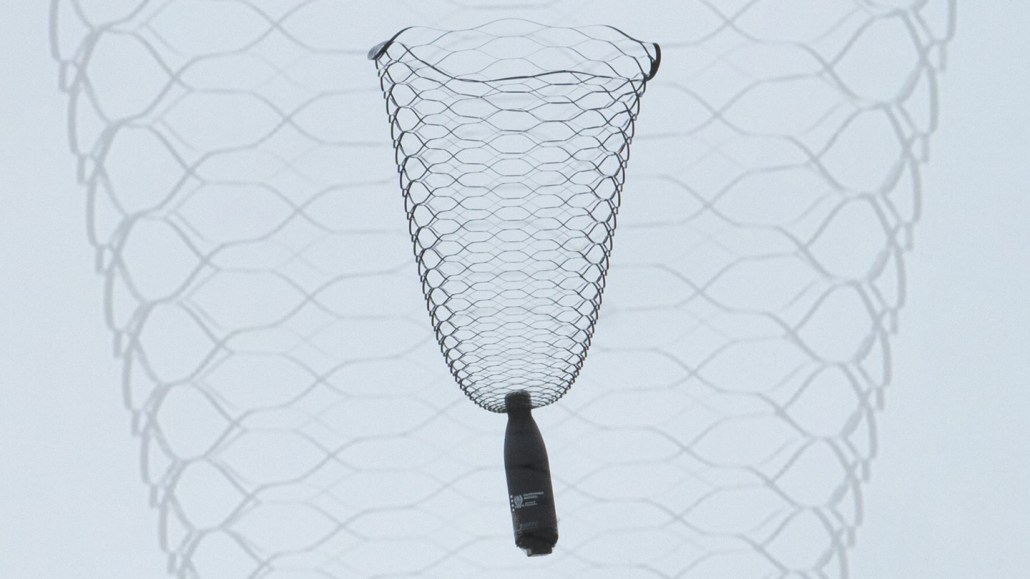These parachutes unfurl thanks to the Japanese art of kirigami
The perforated disks could be useful for humanitarian aid drops or package delivery

A water bottle is gently lowered by a parachute (center) made of a Mylar disk with cuts that allow it to unfurl as the bottle falls (close-up of the parachute shown in background).
Frédérick Gosselin